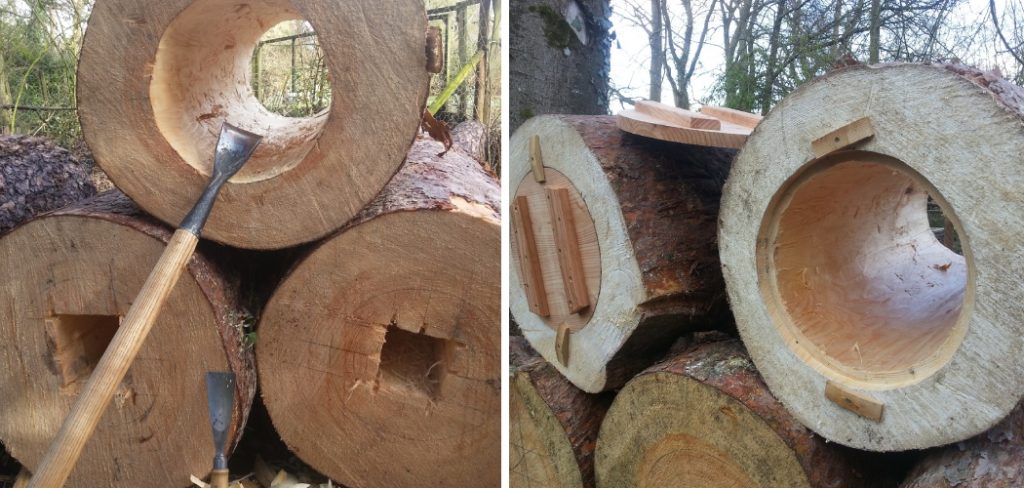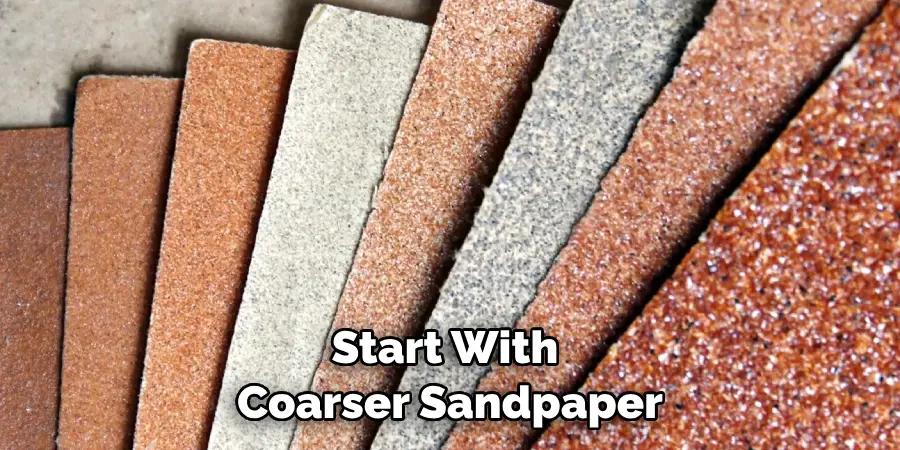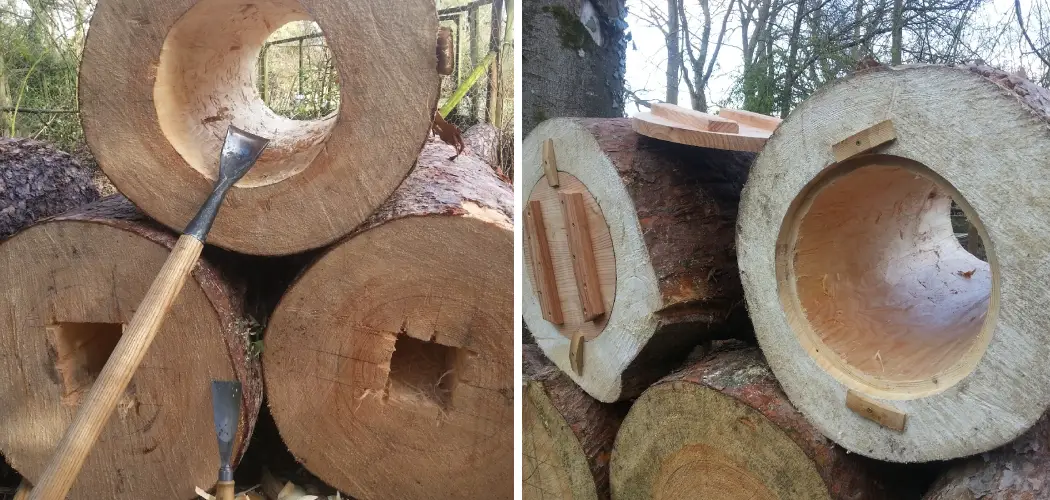Hollowing out a log is a skillful and age-old technique that transforms a simple piece of wood into a functional and visually captivating object. Whether you’re crafting rustic furniture, creating planters, or fashioning decorative pieces, the process of hollowing out a log requires precision, patience, and a deep appreciation for the material’s natural beauty.

This hands-on endeavor allows you to reveal the inner patterns and textures of the wood while preserving its organic charm. In this article, we delve into how to hollow out a log, exploring various methods and tools that enable you to transform solid timber into intricate and versatile creations.
Whether you’re an experienced woodworker or a newcomer to the craft, mastering the art of hollowing out a log opens a world of creative possibilities that showcase the harmonious fusion of nature and craftsmanship.
Reasons for Hollowing Out a Log
Hollowing out a log can be a fun and rewarding DIY project for those looking to spruce up their outdoor space. But why hollow out logs in the first place? There are several reasons one might choose to hollow out a log, including:
- Adding an attractive and natural element to your yard. A hollowed-out log placed in a well-maintained garden or an outdoor seating area can add a beautiful rustic charm.
- Creating a creative planter for flowers or plants. Depending on the size of the log, you can create unique planters to showcase your favorite flowers and plants. With enough water and sunlight, these will thrive in their natural environment.
- Creating a habitat for wildlife. Creating a hollowed-out log provides shelter and a safe haven for critters like birds, squirrels, and chipmunks. It’s a way to help promote the health of our wildlife population.
Whether you choose to add an attractive element to your yard or create a habitat for local animals, hollowing out logs can be both fun and rewarding.

Instructions for Hollowing Out Logs
Hollowing out a log isn’t an overly complicated process, but there are certain guidelines to follow to ensure the safety of yourself and your surroundings. Before you start, make sure to grab all of the necessary supplies:
- Safety glasses
- Protective gloves
- Chainsaw
- Drill
- Chisel and mallet
- Push broom or vacuum cleaner
Once you have all of the supplies, it’s time to get started. Begin by marking the log with a pencil where you will make your cuts. Make sure you account for any knots or bumps in the wood that will affect how the log is cut. You should also be sure to wear protective gear throughout the entire process.
Next, take your chainsaw and make cuts along the markings that you made in the log. Make sure to cut slowly and cautiously, as this will help ensure an even cut. Once you have made your initial cuts, switch out the chainsaw for a drill with a wood bit. The purpose of this step is to remove any debris left in the log after the initial cuts were made.
Importance of Proper Techniques for Safety and Desired Results

Hollowing out a log requires the use of tools and techniques to ensure safety from injury as well as achieving the desired results. When using a saw, it is extremely important to wear protective eyewear and sturdy gloves to prevent any wood chips or splinters from injuring your hands or eyes.
The same goes for other tools such as chisels, gouges, and mallets. It is also important to keep in mind that the wood you are working with may contain nails or other metal objects that can be hazardous when using any power tools.
When hollowing out a log, it is best to saw through about 2/3 of its thickness so that there is an area left for the chiselling and gouging. This will help to minimize the risk of damaging or splitting the log as you work, as well as create a cleaner and smoother inside surface when finished.
When using a chisel or gouge, use a mallet to apply even pressure on these tools while carving out the log. Work carefully and slowly with each tool until you have created the desired shape for your hollowed-out log. Keep in mind that it is important to remove any splinters or rough surfaces on the sides of the log in order to achieve a smooth finish.
When you have finished carving out the hollow, you can use sandpaper and other tools such as wood files or rasps to further refine and smooth out its surface. This will help to ensure a beautiful finish when you’ve completed your hollowed-out log project.
10 Methods How to Hollow Out a Log
1. Log Selection and Preparation: The Foundation of Your Project

The journey begins with the careful selection of the log. Choose a log that aligns with your project’s dimensions, wood type preferences, and intended purpose. Consider both the visual appeal and the structural integrity of the log.
Pay attention to factors like the log’s moisture content and whether it has been seasoned or dried appropriately. Properly preparing the log is crucial to preventing future cracks, warping, or other undesirable changes as the wood dries and ages.
2. Safety Precautions: Shielding Yourself
Safety is paramount in woodworking, and hollowing out a log is no exception. Before you begin, ensure you’re equipped with the necessary protective gear. Safety goggles shield your eyes from wood chips, a dust mask guards against inhaling sawdust particles, and gloves protect your hands from sharp tools and splinters. Prioritizing safety minimizes risks and allows you to focus on the creative process with confidence.
3. Chainsaw Initial Cuts: Shaping the Foundation
Kickstart the hollowing process by using a chainsaw to create initial cuts along the length of the log. These horizontal cuts should be spaced evenly and parallel to each other, defining the depth of your hollowed area. This method, known as “chainsaw box cutting,” efficiently removes bulk material, forming a rough shape of your desired outcome. These cuts serve as a foundation upon which you’ll refine your design.
4. Adze and Chisel Technique: Sculpting Precision
Transition to the adze and chisel method to achieve more refined shaping. The adze, a tool with a curved blade, is used to scoop out larger portions of wood, shaping the interior according to your design. Follow this by using chisels to achieve intricate details and smooth surfaces. The adze and chisel method allows for precise control over the sculpting process, granting your piece a distinct and personalized touch.

5. Auger Drilling: Detailed Hollowing
Augers are specialized drill bits designed for woodworking. Employing an auger, drill holes into the log’s interior to create pockets of space. These holes serve as starting points for removing the remaining wood between them. Use chisels or gouges to sculpt the material between the drilled holes, allowing you to hollow out the log with more precision. This method is particularly effective when working on intricate or deep designs.
6. Router Technique: Controlled Carving
Utilize a router with a straight bit to ensure controlled and consistent carving. Mark the intended depth and shape of the hollowed area on the log’s interior. Secure the log in place and use the router to remove wood methodically. This technique is advantageous for achieving uniform depths and smooth surfaces, making it suitable for projects where precision is paramount.
7. Spoon Gouges and Carving Tools: Nurturing Details
Spoon gouges and carving tools play a pivotal role in refining the inner contours of the log. These tools empower you to create intricate patterns, sculpt unique designs, and achieve a polished interior surface. Embrace the tactile experience of working with these tools, gradually bringing your vision to life while ensuring each curve and texture is deliberate and thoughtfully crafted.
8. Sanding and Smoothing: Elevating Elegance
After achieving your desired design, transition to sanding and smoothing the interior. Start with coarser sandpaper to eliminate tool marks, blemishes, and uneven surfaces. Gradually progress to finer grits to achieve a satin-smooth finish that both enhances the visual appeal and guarantees comfort. Sanding not only refines your piece but also prepares it for finishing touches.

9. Applying Finish: Protect and Enhance
Applying a suitable wood finish is essential for both protection and aesthetics. Select a finish that aligns with your project’s purpose and desired look. The finish not only enriches the wood’s natural grain but also safeguards it from moisture and environmental elements. Applying multiple coats ensures durability and longevity, making your piece resilient enough for its intended use.
10. Personalization and Design Elements: Express Your Creativity
With the basic hollowing complete, consider incorporating personal touches and design elements to infuse uniqueness into your creation. These can range from intricate carvings and decorative inlays to epoxy resin fills that add a modern twist. By adding these design elements, you create a piece that’s not only functional but also a reflection of your artistic identity.
Things to Consider When Hollowing Out a Log
There are a few points to consider when you plan to hollow out a log. First of all, it’s important to make sure that the log is completely dry before you start working on it. Wet wood might be more difficult to work with and dampness can cause your tools to slip and slide, leading to unwanted results or even injury. If possible, let the log dry in the sun for a few days before you attempt to hollow it out.
The tools you will need to hollow out a log depend on what you plan to use the hollowed-out log for. If you’re looking to create a rustic candle holder, then a chisel and mallet can do the job. However, if you want to make a container or something more intricate, then you might need a router bit, drill, or saw.
In addition to the right tools, it’s also important to know the type of wood you are working with. Different types of wood require different techniques and tools when hollowing out logs.

Some Common Mistakes When Hollowing Out a Log
When hollowing out a log, it’s important to be aware of some common mistakes that can occur. First and foremost, make sure you use the proper tools for the job. A dull saw or chisel can put undue pressure on your log and cause it to crack or warp in unpredictable ways. Additionally, don’t try to hollow out too much at once as this can cause your log to be over-stressed and it may break.
It’s also important to use the right technique when hollowing out a log. Avoid digging too deep into the wood as this can weaken the structural integrity of the log, or cause splitting. Instead, make sure that you are making shallow cuts and gradually working deeper until you’ve reached your desired hollowing depth.
Finally, when you’ve finished hollowing out the log, inspect the interior for any signs of damage and make sure there are no cracks or splinters on the inside that could lead to further issues later. Taking care of these common mistakes now can help ensure a successful hollowed log in the future!
Conclusion
In conclusion, hollowing out a log is an easy and exciting DIY project that can spruce up any backyard or garden space. With the proper tools and safety precautions, anyone can do it! This tutorial has offered a step-by-step guide to how to hollow out a log with detailed instructions and pictures. While it will take some time and energy, the results of this project are certainly worth it.
Not only is it rewarding to make something with your own two hands, but the addition of a hollowed out log is sure to make any corner of outdoor space look more inviting. So now that you’ve read this article, why not give this project a try for yourself?
Get creative with what you do with it! Gather some supplies, pick out a log (or two!) from outside, and get started on your own creation today. You won’t regret it – in fact, you may find the process so satisfying, you’ll want to hollow out even more logs!

